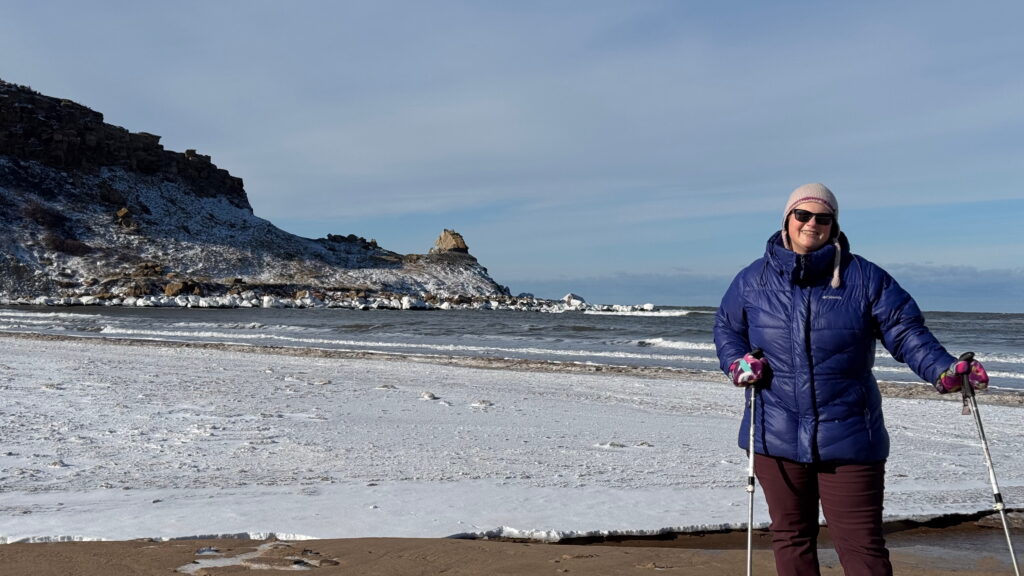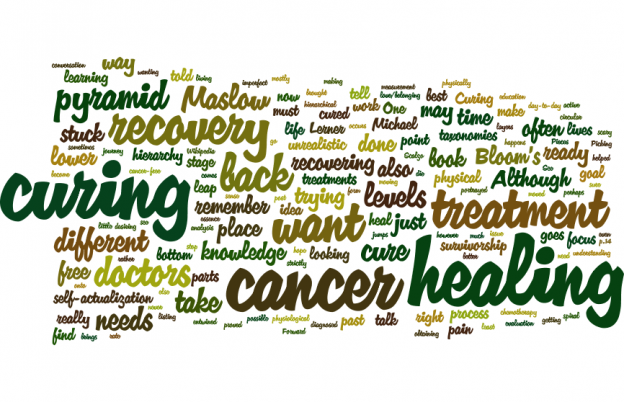Although healing and curing are different, they are entwined. For any cure to work, the physical healing power of the individual must be sufficient to enable recovery to take place. But healing goes beyond curing and may take place when curing is not at issue or has proved impossible. Although the capacity to heal physically is necessary to any successful cure, healing can also take place on deeper levels whether or not physical recovery occurs. ~ Michael Lerner in Choices in Healing, 1998, p.14
I’ve been reading the book Picking Up the Pieces: Moving Forward After Surviving Cancer by Maggee & Scalzo (2007). In it they talk about the difference between curing, healing, and recovering. The book quickly jumps to the idea of recovery and the various stages of it glossing over the curing and healing parts, however, I find myself stuck back in the differences between curing and healing.
Curing is the goal of our doctors when we are diagnosed with early stage breast cancer. They do their best to recommend treatments with the goal of curing us of cancer. Curing is difficult to measure. You cannot know if someone was truly cured of the cancer until they die of something else. There could be a low probably of the cancer coming back. There are some attempts at measurement, such as the five-year survival rate, but those numbers are problematic at best.
One of the challenges of survivorship is that time after your doctors tell you are cancer-free (or in remission) or finished treatment (sometimes there are significant treatments such as chemotherapy that occur after your are cancer free – it really depends on the specific situation and treatment plan). In essence, what happens is, that at some point your doctors have done all they can to “cure” you. But they may not have done everything that you need to be healed.
Now that brings me over to our friend Maslow. Maslow proposed a hierarchy of needs which is often portrayed as a pyramid. See the Wikipedia listing here: https://en.wikipedia.org/wiki/Maslow%27s_hierarchy_of_needs. In education we talk about the lower needs must be met before the upper needs can be addressed. Although this isn’t strictly true, it does have some merit. The pyramid goes like this (from bottom to top): physiological, safety, love/belonging, esteem, self-actualization. So while we are looking at taxonomies that are often represented by pyramids, we should take a step over to look at Bloom’s taxonomy. It looks at different levels of knowledge and is often used in instructional design as a way to categorize learning objectives. Bloom’s categories are knowledge, comprehension, application, analysis, synthesis, evaluation.
What does this have to do with cancer survivorship? I can see some parallels to the idea of curing, healing, and recovery. When we are in active treatment, our focus is on curing, it is at the bottom of the pyramid. When we are learning about our cancer at this point, we are interested in obtaining knowledge. Our focus is on the facts. We want to comprehend what we are being told. Our lives are lived in the lower levels of both Maslow and Bloom’s. We are just doing what we are told to do and trying to make it out the other side alive – with the hope of being cured.
After the acute treatment phase, there comes a time when our doctors tell us they are done with us – at least those of us who our doctors are trying to “cure” – the conversation and process is very different for those living with metastatic disease. This is were we are looking towards the higher levels of the taxonomies. We were trying to synthesize what has just happened. We seek greater meaning making (or not). We become ready to stop focusing on the day-to-day that was treatment, and start picking up the pieces and getting on with our lives.
One of the other ideas this book has brought up is that there is a gap between where we want life to be and where it is. More than that, there is a sense of wanting to go back to that time before cancer. We want our health to return to us. We want back what cancer and treatment has taken away. However, for many of us, this is an unrealistic want. We will never get back to what we were before. Not only because life doesn’t work that way, but also because our memories of the past are imperfect. We tend to remember the parts of our past where we were healthy and pain free. We don’t remember the back aches that we had before cancer. We only remember a pain free body. So not only is our want unachievable it is also unrealistic. In some ways, perhaps, this is what is meant by the “new normal” that we are suppose to be seeking post treatment.
I’m not sure that Maslow or Bloom really helped me gain a better understanding of where I am right now. I’m still desiring some form of healing. I’m not ready to move onto the self-actualization part that may come with recovery (if that is even possible). I’m stuck a little lower down on the pyramid. I want to find a way to heal first, before I leap too much further into recovering. Perhaps, as Michael Lerner says, it isn’t a linear process – it isn’t a hierarchical pyramid – rather it is a circular or spiral journey, where we weave in-and-out or between the different layers of curing, healing, and recovering. I’ve moved further from the center, which was curing, and am moving further to the outer edge which is recovery, but mostly I’m stuck in the healing stage. Not yet ready to make a full leap into recovery, because that is just too scary right now.


Leave a Reply